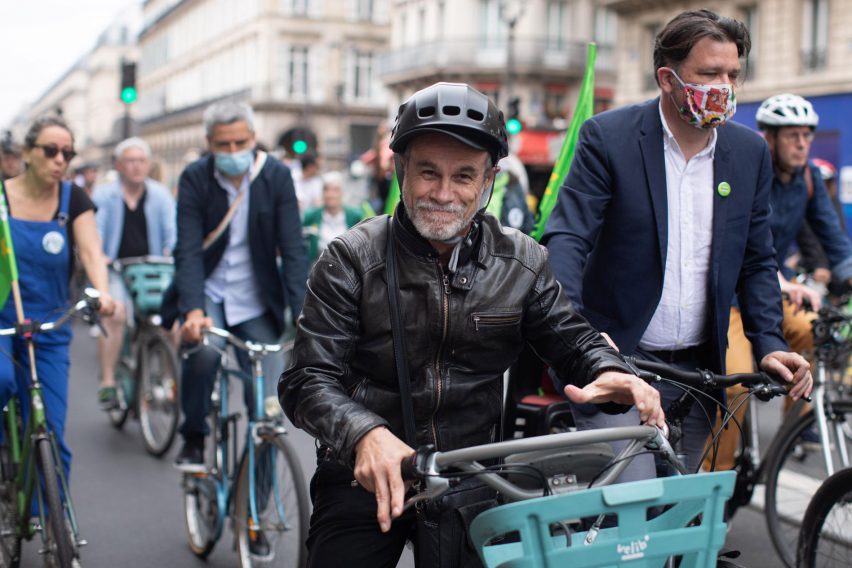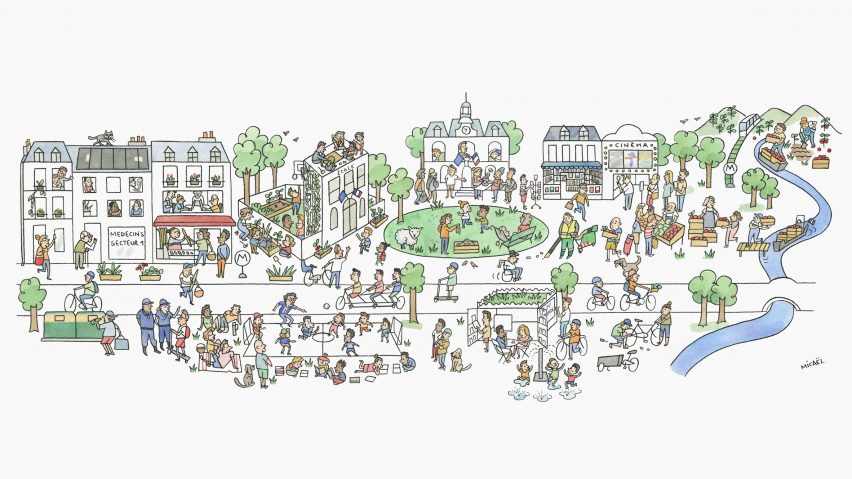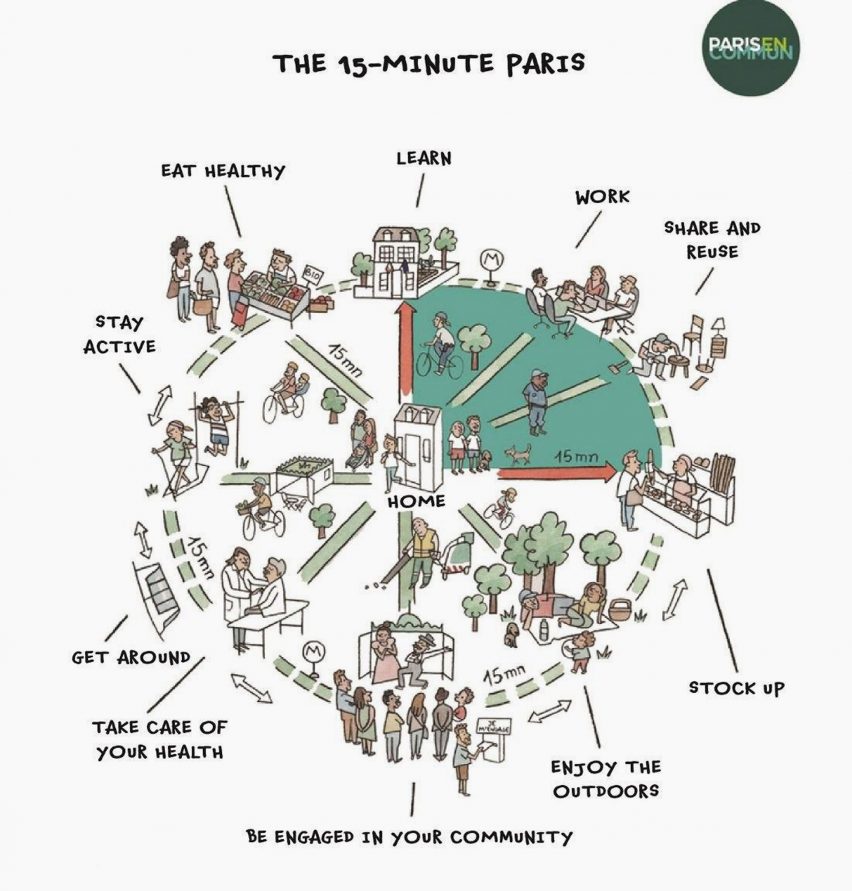15-Minute City concept by Carlos Moreno wins Obel Award 2021
A concept for a city in which citizens can access their daily necessities by foot or by bike within 15 minutes has won the Obel Award for 2021.
Aptly named the 15-minute city, the urban planning model was developed by French-Colombian scientist Carlos Moreno to help tackle car hegemony and create more sustainable human-centric urban environments.

It is the third project ever to win an Obel Award, an international prize presented annually by the Henrik Frode Obel Foundation to celebrate "outstanding architectural contributions to human development".
This year the competition focused specifically on new solutions to the challenges faced by cities around the world.
Paris among cities already using Moreno's ideas
Moreno first revealed his vision for the 15-Minute City model in 2016. Its overarching aim is to help improve the quality of life of people living in dense metropolitan areas.
It imagines decentralised cities in which citizens can access both their home and workplace in either a short walk or cycle. Food, health, education and cultural facilities would also be accessible without a car within a quarter of an hour.
Reducing dependency on vehicles in this way could help cut fossil fuel usage, carbon emissions and air pollution and, in turn, improve the health of both people and the planet.

Facilitating active travel would also offer citizens physical health benefits, while reducing their commute times would help them to achieve a better work-life balance.
Moreno's framework, which can be adapted to suit local cultures and needs, has already informed urban planning in cities such as Buenos Aires, Chengdu and Melbourne.
The concept was also popularised by Paris mayor Anne Hidalgo who used it during her re-election campaign in 2020, for which Moreno served as scientific advisor.
Concept is "step towards the future"
The jury for the Obel Award 2021 included landscape architect Martha Schwartz, academic Wilhelm Vossenkuhl and architects Kjetil Thorsen of Snøhetta, Louis Becker of Henning Larsen Architects and Xu Tiantian of DnA.
Schwartz, who chaired the jury, described the 15-Minute City concept as "a real step towards the future".

"We are living in a time of urgency to make a change and live more efficiently," she said.
"The 15-Minute City addresses the need for us to rethink how our cities can be reimagined, redesigned, and regenerated for the primary benefit of people and the environment."
Moreno to reimagine concept for "rural territories"
With a prize of €100,000 (£86,000), Moreno and his team are now developing the concept further in order to tailor it to places with lower densities. For example, a scheme in the south of France could allow citizens to access daily needs within 30 minutes.
"We need to broaden our focus to include different densities and territories: from the small cities to the mid-sized cities and even to the rural territories," Moreno said.
"We need to keep the concept of the 15-Minute City but imagine new ways to implement its principle of proximity in other densities."
Moreno hopes that the ongoing coronavirus pandemic may also help put the 15-Minute City on the agenda in other countries. This is because the pandemic and resultant lockdowns have led many people to travel less and spend more time in their immediate neighbourhoods, illuminating the benefits of localisation and walkable public space.
Last year, C40 Cities, a network that helps cities around the world tackle climate change, promoted the 15-Minute City as a way for metropolitan areas to recover from Covid-19.
In 2020 the Obel Award was given to German architect Anna Heringer for the Anandaloy community centre in Bangladesh. The building's structural elements are crafted from rammed earth made with mud from local ponds for its structural elements.
Before that, Japanese architect Junya Ishigami won the prize for his ObelArt Biotop Water Garden – an artificial landscape near the Nasu Mountains in Japan. It was chosen by the jury as it demonstrates how human interventions can enhance a landscape, rather than cause damage.
Main photo is by Emilie Koefoed for the Obel Award.